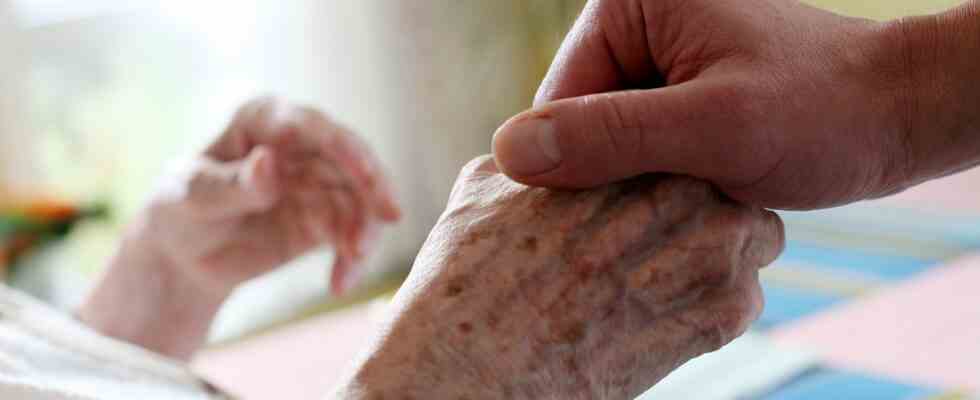Status: 02/28/2023 11:05 a.m
According to a report, almost every second corona death in Germany has previously lived in a care facility. This is shown by data from the Barmer health insurance company. The nursing staff also suffered from the pandemic – with dramatic consequences.
The corona pandemic hit old people in need of care particularly hard: almost every second person who died of Covid-19 lived in a nursing home. This is shown by an evaluation by the Barmer health insurance company. For the years 2020 and 2021, the total proportion of those who died with Covid-19 is 45 percent. According to the report, the proportion of people suffering from Covid-19 in the first and second waves was seven to eight times higher among residents than in the general population.
According to the report, the high number of corona deaths led to excess mortality in care facilities. “Compared to the years 2017 to 2019, there is an excess mortality of more than 150,000 people among the residents.”
Acceptance of the Corona rules played a role
The report shows large regional differences. While in December 2021 – at the peak of the second corona wave – only a very small proportion of the residents in Bremen with 0.57 percent and Schleswig-Holstein with 1.27 percent were ill, this proportion in Thuringia (9.73 percent) and Saxony (10.3 percent) were significantly higher. “Countries with a lower acceptance of the corona measures also had higher proportions of Covid in the population,” the authors write.
Lack of care and loneliness
According to the report, the contact restrictions for visitors and medical staff had serious consequences for the people being cared for. These “not only led to limited medical care, but also had negative effects on the mental health of those living in the home, not least due to the feeling of loneliness,” says the report.
The corona vaccinations have meanwhile led to a decrease in the number of corona deaths in nursing homes. However, home residents are still at high risk. “Preparations for new variants of the virus and further waves are therefore indicated. In order to prevent the negative indirect effects, however, measures to reduce contact should be avoided as far as possible,” say the authors.
Fatigue and lack of sleep among nursing staff
According to the study, the pandemic has also left deep scars on nursing staff. “The contact blocks in the nursing home, the necessary hygiene measures, including the obligation for staff to wear masks, and the staff shortages caused by the pandemic have made the work of the nursing staff very difficult.” Emotional support, which is otherwise provided by relatives, also had to be provided by the staff.
With consequences: According to the report, almost 70 percent of those surveyed said that they are often physically exhausted, compared to 43 percent before the pandemic. The number of nurses who can no longer sleep through the night has risen from 29 percent to 43 percent. In addition, 43 percent have considered giving up their job. Before the pandemic, it was almost 20 percent.
Disability rates for nursing home caregivers were about five times higher than those for workers in other sectors of the economy in the first two waves, the report said.
Patient advocates criticize the elimination of the mask requirement
In view of the still existing risks for older people, the German Foundation for Patient Protection criticizes the elimination of the mask requirement for nursing staff. It is absurd “that visitors to nursing homes and clinics have to wear a mask, but the staff doesn’t,” said foundation board member Eugen Brysch to the newspapers of the Funke media group. Since the beginning of the pandemic, medical and nursing staff have also carried the virus into the facilities, argued Brysch and advocated mandatory daily tests for nursing staff.
He criticized: “The federal government, the federal states and experts failed to focus on the essentials during the pandemic. That is and will remain the safety of old, sick and dependent people.”

